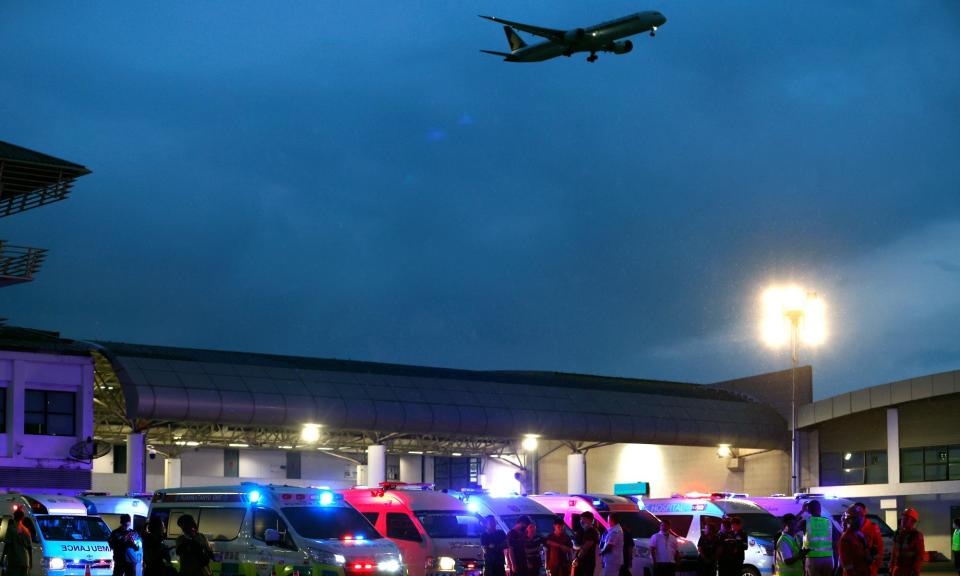What causes air turbulence and how worried should passengers be?

The death of a British passenger and injuries to others on a Singapore Airlines passenger flight from London has underlined the potential dangers of turbulence. But what causes turbulence, how much risk does it pose – and is the climate crisis making it worse?
How rare are casualties?
On international scheduled flights, fatalities directly caused by turbulence are incredibly rare. Pilots are usually able to give advance warning of most types of turbulence and ensure all on board are strapped in.
On smaller private planes or business jets, serious injuries or deaths have been more frequent, with the US National Transport Safety Board recording more than 100 injuries and dozens of deaths in just over a decade on domestic flights, although fatalities have mostly occurred when turbulence has caused the planes to crash.
On bigger planes, turbulence risks head or other injuries to people who could be thrown around the cabin if not strapped in, or be struck by flying debris – not least during a trolley service. Crew are at particular risk and have the biggest number of injuries.
What is turbulence and how can planes avoid it?
Broadly, it is caused by the meeting of air at different temperatures, pressure or velocity, where different wind patterns collide – a bit like boats suddenly encountering choppy waters.
While some weather and geographical conditions, such as thunderstorms, mountain ranges and the appearance of certain clouds, can signal turbulence ahead, there is also “clear-air turbulence”, which can take plane pilots by surprise and occur without warning.
Stuart Fox, director of flight and technical operations at the global airline body Iata, says forecasts showing incoming weather fronts or the air flow over mountains could demonstrate a higher probability of clear-air turbulence. “But you can’t see it,” he says. “Airflow strength and direction can change rapidly, and the forecasts can only indicate the likelihood.” Such wind shears can knock planes off course, lose altitude quickly or lurch violently.
Pilots can now be steered by reports from aircraft ahead. Iata hosts a platform used by a number of rival carriers to exchange data, Fox says: “It gives immediate information for people who could be flying into the same turbulence.”
But while areas such as the Bay of Bengal are well known for turbulence, pilots’ options may be limited, says Marco Chan, a former commercial pilot and lecturer in aviation at Buckinghamshire New University. He says the Singapore Airlines incident took place “within the inter-tropical convergence zone, where thunderstorms are notorious. Thunderstorms are prominently displayed on the pilots’ navigation display – but it may not be possible to completely circumvent the storm cluster as they can stretch well over 50 nautical miles.”
Is the climate crisis making it worse?
Yes, according to at least one study. Scientists at Reading University said their research showed higher temperatures as a result of the climate crisis were leading to significant increases in turbulence across transatlantic flights.
Incidents of severe turbulence increased by 55% between 1979 and 2020, they found, owing to changes in wind velocity at high altitudes.
Prof Paul Williams, one of the authors of the study, said it showed predicted choppier skies had already arrived. He added that the aviation industry needed to invest in better systems to forecast and detect turbulence.
How worried should passengers be?
Episodes of turbulence are certainly alarming – but the risks of severe injury to passengers or worse have been remote on major commercial airliners, until the tragic event on Singapore Airlines flight SQ321 on Tuesday. The last confirmed casualty caused by turbulence that Iata was aware of on a scheduled flight was in 1997, on board a United Airlines flight from Tokyo to Honolulu.
However, Fox said: “Most airlines advise passengers to wear their seatbelts throughout the flight, and I think that’s good advice.”

 Yahoo Finance
Yahoo Finance 